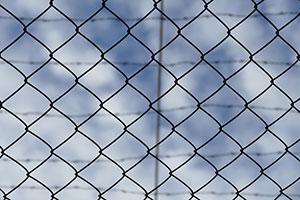The Museums Association Esmee Fairburn Collection Fund has awarded £120,000 to the National Justice Museum to introduce its unique 200-year-old HM Prison Service collection to a wider audience.
The funding supports a three-year project ‘Ingenuity, Creativity, Hope’ involving people in… more
In the year 2017–18 inspectors documented some of the most disturbing prison conditions they had ever seen, according to Peter Clarke, HM Chief Inspector of Prisons.
Launching his third annual report, Mr Clarke said these conditions had no place in the prison system in an advanced nation in the 21st century. “Violence, drugs, suicide and self‑harm, squalor and poor access to education are again prominent themes.”
Inspectors at the rat-infested HMP Liverpool could not remember worse conditions and the tragic toll of self-inflicted deaths at HMP Nottingham led Mr Clarke to describe the jail as “fundamentally unsafe.” The iconic Wormwood Scrubs in London suffered from appalling living conditions, violence, poor safety and seemingly intractable problems over repeated inspections.
Another recurrent theme in 2017–18, Mr Clarke said, was “the disappointing failure of many prisons to act on our previous recommendations – which are intended to help save lives, keep prisoners safe, ensure they are treated respectfully and to give them a chance of returning to the community less likely to reoffend.” 
However, 2017–18 was also a year in which the Inspectorate agreed with the government an important new protocol for demanding, publicly, urgent action from the government in prisons, young offender institutions and secure training centres where the outcomes for those held, particularly in terms of safety, are exceptionally poor. This Urgent Notification was invoked in the year in relation to HMP Nottingham.
Along with this, Mr Clarke welcomed a government decision to fund the Inspectorate to do follow-up work in a small number of troubling cases – potentially “one of the most significant developments for the independent scrutiny of prisons in recent years.”
Mr Clarke stressed that his teams had highlighted good and innovative practice in some of the prisons they visited, finding “evidence of hard work by many in the Prison Service to improve the treatment and conditions for the more than 80,000 men and women held in detention in England and Wales.”
In total in 2017–18, the Inspectorate – which has a relatively small number of around 66 full-time equivalent staff – published 77 reports, the majority relating to prisons and young offender institutions (YOIs) in England and Wales but also covering UK immigration removal centres, immigration removal flight escorts, police custody suites, criminal court custody facilities and Border Force and military custody facilities, as well as a number of jails in Northern Ireland and Jersey.
Mr Clarke’s annual report contains an overview of those non-prison inspections, as well as key findings in the year from prisons and YOIs:
- Men’s local and training prisons. “As in the previous two years, these were the prisons that caused us most concern. The increase in levels of violence…continued and self-harm and assaults reached new highs.”
- Self-harm. Although self-inflicted deaths fell from an all-time high in 2016, there were still repeated patterns of failure in far too many cases. “We frequently found that basic operational procedures, such as responding to cell call bells and ensuring that staff were properly trained to respond in the event of an incident, were not being carried out.”
- Drugs. The ready availability of drugs in too many prisons sat behind much of the violence. A “shockingly high” number of prisoners acquired a drug habit while they were detained.
- Poor living conditions. Thousands of prisoners were forced to share cells designed to hold only one. In many cases they spent up to 22 hours a day locked in a small cell, where they ate all their meals, with a poorly screened or unscreened lavatory inches from their bed or food.
- Purposeful activity. The government’s ambition to improve training and education relied on getting prisoners out of cells but 20% of prisoners said they were unlocked for less than two hours a day, and only 16% reached the HM Inspectorate of Prisons (HMIP) expectation of being out of their cell for more than 10 hours. Thirty-eight per cent of young adults aged 18–21 were unlocked for less than two hours each day.
- Resettlement. In far too many cases prisoners were being released without proper support in finding accommodation, dealing with benefits and finance or finding work.
- Women in custody. Inspections of two women’s prisons showed that they generally produced better outcomes than in the men’s estate, though the high rate of self-harm showed the very complex needs of many women.
- Children’s custody. Mr Clarke welcomed some signs of improvement in safety in some YOIs but boys were still spending far too much time locked in their cells. In March 2018 an HMIP report showed that incentives were far more effective as a means of managing behaviour than relying on punitive measures.
Overall, Mr Clarke said:
“I realise that in recent years many prisons, short of staff and investment, have struggled to maintain even basic standards of safety and decency. Some prisons, in very difficult circumstances, have made valiant efforts to improve. Others, sadly, have failed to tackle the basic problems of violence, drugs and disgraceful living conditions that have beset so many jails in recent years. I have seen instances where both staff and prisoners alike seem to have become inured to conditions that should not be accepted in 21st century Britain.”



